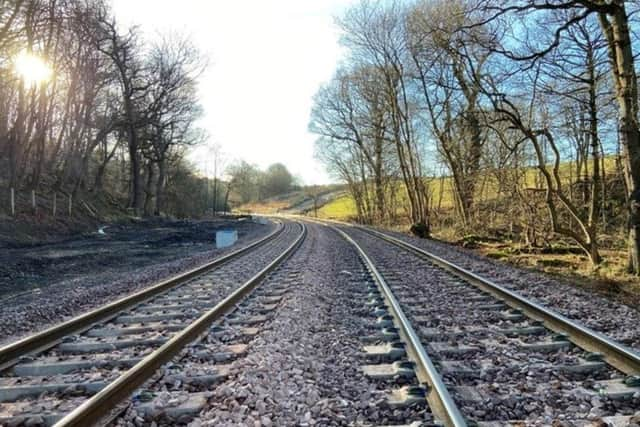Council looks at options after Leven rail link closes three historic crossings
and live on Freeview channel 276
Representatives from Network Rail attended Glenrothes Area Committee meeting on Tuesday to answer questions about the heated debate surrounding three Levenmouth rail crossings.
As part of the multi-million £ Levenmouth Rail Link, the formerly unrestricted crossings at Doubledykes, Waulksmill and Tullybreck were closed indefinitely, which resulted in public outcry from local residents and councillors alike. The Right of Way at Doubledykes was extinguished by a British Railways Order in the 1980s. However, councillors were told for the first time that it will essentially be impossible to establish a new order going forward now that that section of rail line is live.
Advertisement
Hide AdAdvertisement
Hide AdOwen Campbell, senior communications manager for Network Rail, told area committee councillors that it’s a “legal fact” you can’t create prescriptive rights across an operational railway. However, that doesn’t mean there’s no hope for a public crossing.


“The legal position has been outlined, but we’ve got an unsatisfactory result," said Glenrothes West and Kinglassie councillor Altany Craik (Labour). "We don’t get to ride off into the sunset once this is done - we have to find a way to make this palatable and make it work for our communities."
He continued: “That’s the discussion we’ve been having with Transport Scotland - we’re looking forward together to find what can or can’t be done. We’re looking at what a crossing might look like, what it would cost, and how to find the funding for it. Keeping score doesn’t really matter at this point, the key thing is to make sure that as a community we find a way to - if we can - deliver a crossing that meets our aspirations.”
According to Mr. Campbell, the key point is that Doubledykes crossing has not been a legal public right of way since the 1980s.
Advertisement
Hide AdAdvertisement
Hide Ad“That isn’t a matter of opinion, it’s a matter of legal reality. Its status in law meant that Network Rail couldn’t fund anything over and above what the project was scoped to deliver,” he said.
He explained that Network Rail “thoroughly examined” all common use crossing points along the new rail route - including Doubledykes, Waulksmill and Tullybreck, but the rail authority based its plans “on the legal realities” of each site. With a limited envelope of active travel route development funding, Mr Campbell said crossing points that would best serve and link communities were prioritised over other points such as Doubledykes.
“It wasn’t that Doubledykes and the others weren’t looked at because they were, it’s just that no organisation involved in the scoping of crossing points deemed that their priorities would lie with these crossings in the west,” Mr Campbell said. He acknowledged the strong feelings of the local community which still has aspirations to see the crossings reopened, but he said it’s not a gift that Network Rail can give.
“If at an earlier point in the development it had been established that there was a need for a bridge at this location and if the funding package would have been developed, we would have happily constructed it, but it wasn’t forthcoming from any organisation," he said.
Advertisement
Hide AdAdvertisement
Hide AdMartin McKinlay, senior sponsor for Network Rail, emphasised that the authority would “happily” engage with whoever wishes to ask for support in constructing a crossing point at Doubledykes, but explained that it’s simply not in their scope to fund or build it themselves at the moment.
“There are safety regulations we would have to deploy to protect the railway from construction, and I suspect going forward it would be a Levenmouth project that would deliver it, but Network Rail would absolutely facilitate a crossing in that area.”
There's no definitive solution at this point, but all of the key parties insist they are working together to find a way forward.
Closed door discussions will continue to take place between the council, Transport Scotland and Network Rail looking for a solution. Cllr Craik promised to keep giving progress updates as the discussions continue. Transport Scotland was unable to attend. It will be invited to the next committee meeting.